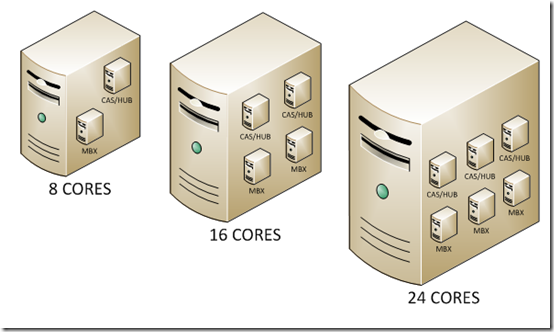UM and hypervisor-based clustering now supported when virtualizing Exchange 2010
Some great news announced by the product team today:
- The Unified Messaging server role is now supported in a virtualized environment.
- Combining Exchange 2010 high availability solutions (database availability groups (DAGs)) with hypervisor-based clustering, high availability, or migration solutions that will move or automatically failover mailbox servers that are members of a DAG between clustered root servers, is now supported.
New virtualized UM guidance (from the whitepaper):
- Exchange 2010 SP1, or later, is required.
- minimum four CPU cores and 16 GB memory
- 40 concurrent calls if Voice Mail Preview is active for all UM users, and 65 concurrent calls if Voice Mail Preview is not in use – this appears to be about a 60% perf hit vs. physical UM server
- 4,000 Unified Messaging–enabled mailboxes if they all have Voice Mail Preview enabled, and about 6,500 mailboxes if Voice Mail Preview is not enabled. – also around a 60% scale hit vs. physical UM server
New DAG and virtualization HA guidance such as Hyper-V Live Migration or VMWare’s Vmotion (from the whitepaper):
- Exchange 2010 SP1, or later, is required
- Use cluster shared volumes instead of pass-through drives where possible
- ensure that hypervisor and host-based clustering technology is able to migrate resources in less than five seconds
- Ensure that the latest patches for the hypervisor are deployed
- Enable jumbo frames on the network interface for each host and ensure that the switch handling the network traffic was configured to support jumbo frames.
- On the live migration network, change receive buffers to 8192 (default for the network interfaces in test was 896) on each host
- Deploy as much bandwidth as possible for the live migration network. In testing, Microsoft used 5 Gb
. Grab the new best practices Exchange 2010 virtualization whitepaper here.
